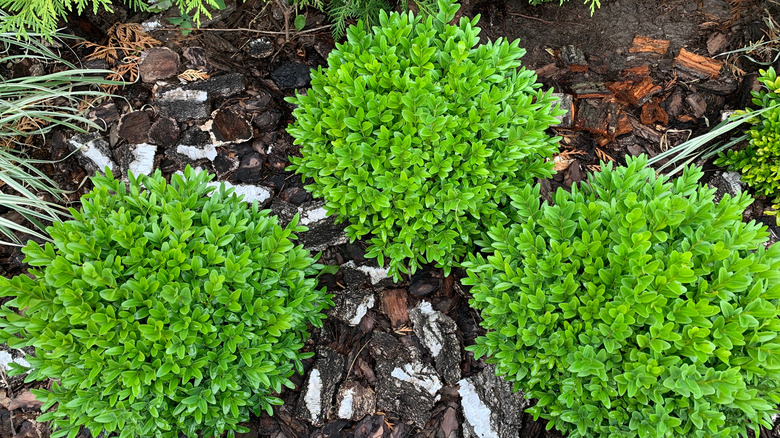The sweet smell and stunning delicate beauty of gardenia make them a desirable choice for many gardens. There are over 200 varieties of this species, including options such as Gardenia jasminoides, a popular choice in warmer weather. To add a bit more texture and charm to your outdoor space, consider pairing gardenia plants alongside boxwood (Buxus sempervirens), a hardy shrub that tends to be easy to grow once well established.
Gardenia and boxwood are excellent companion plants, meaning they work well to support each other’s needs while adding natural elegance to any garden space. The two plants can encourage each other’s growth, support local wildlife like birds and bees, and provide colorful blooms of color. Be sure to choose varieties of both plants that are best suited for your local environment. Then, work to create the ideal growing space to encourage healthy growth. Both of these plants need similar environments and a bit of maintenance and upkeep throughout the year.
From the crisp white color of the gardenia blooms to the depth of green from boxwood, these plants can easily be placed parallel to each other in a garden or along the flowerbeds by your home. The broad leaves and green foliage of the gardenia pair well with the white or cream-colored flowers and deep green of the boxwood. The smell of both plants is a fantastic benefit, too, especially right under your bedroom window.
Gardenia and boxwood have similar needs

Gardenias are somewhat of a challenging plant to grow, with some routine maintenance required. This broadleaf evergreen shrub can reach 2 to 15 feet in height, depending on the variety, though most are lower to the ground. They are noted for their pretty blossoms that have a wax-like look to them. They need well-draining soil and nutrient-rich (with organic material as the ideal medium for supporting growth). Aim for soil that has a pH level between 5.0 and 6.5, with over 6.0 being necessary for the best results.
Boxwood can also grow quite high, up to 15 feet, though most range from 3 to 10 feet, depending on cultivation and species. That makes it an excellent choice for adding privacy to an area or creating an edge along the property border. Typically easier to grow, boxwoods benefit from soil that’s well-draining and in a pH range of 5.5 to 7.2, working well alongside the same needs as gardenias. Boxwood is easier to grow and does not require much maintenance. Be sure the soil is nutrient-rich for both plants, using organic material to help support growth.
Both plants also do well in the same level of sunlight. Dappled sunlight or partial shade is best for these plants, though boxwoods are tolerant of a bit more sunlight than gardenia. You can plant them next to each other if you’ve selected plants of equal height expectations at maturity to get impressive growth.
Caring for gardenia and boxwoods
There are a few things you can do to support good overall growth of gardenia and boxwood when planted near each other. First, make sure there’s ample air circulation throughout the plants. Good pruning to allow for several inches of airflow under and around the plant will help support their growth. This also helps with pest prevention and may help with keeping the soil from being overly saturated with water. Neither plant does well in soil that doesn’t drain well. Good airflow will also help the scent of both plants to spread easily with a light breeze.
Gardenia needs more soil control and protection, which may mean providing fertilization or the addition of organic material two or more times per year, starting in early spring. While boxwood is less problematic with soil management, it will also benefit from a higher level of organic material. Pruning can also help support the growth of gardenia. Prune after the flowers fade, generally before the fall months. If you prune too late in the season, gardenia will not bloom as well the following spring.
Monitor both plants for insects and diseases, with aphids, thrips, and spider mites being problem pests for these plants. You also want to ensure that you keep the soil light and draining well to prevent powdery mildew and root rot. Boxwood shrubs are more hardy and resilient but, like any plant, a pest-free and disease-free environment is best.
